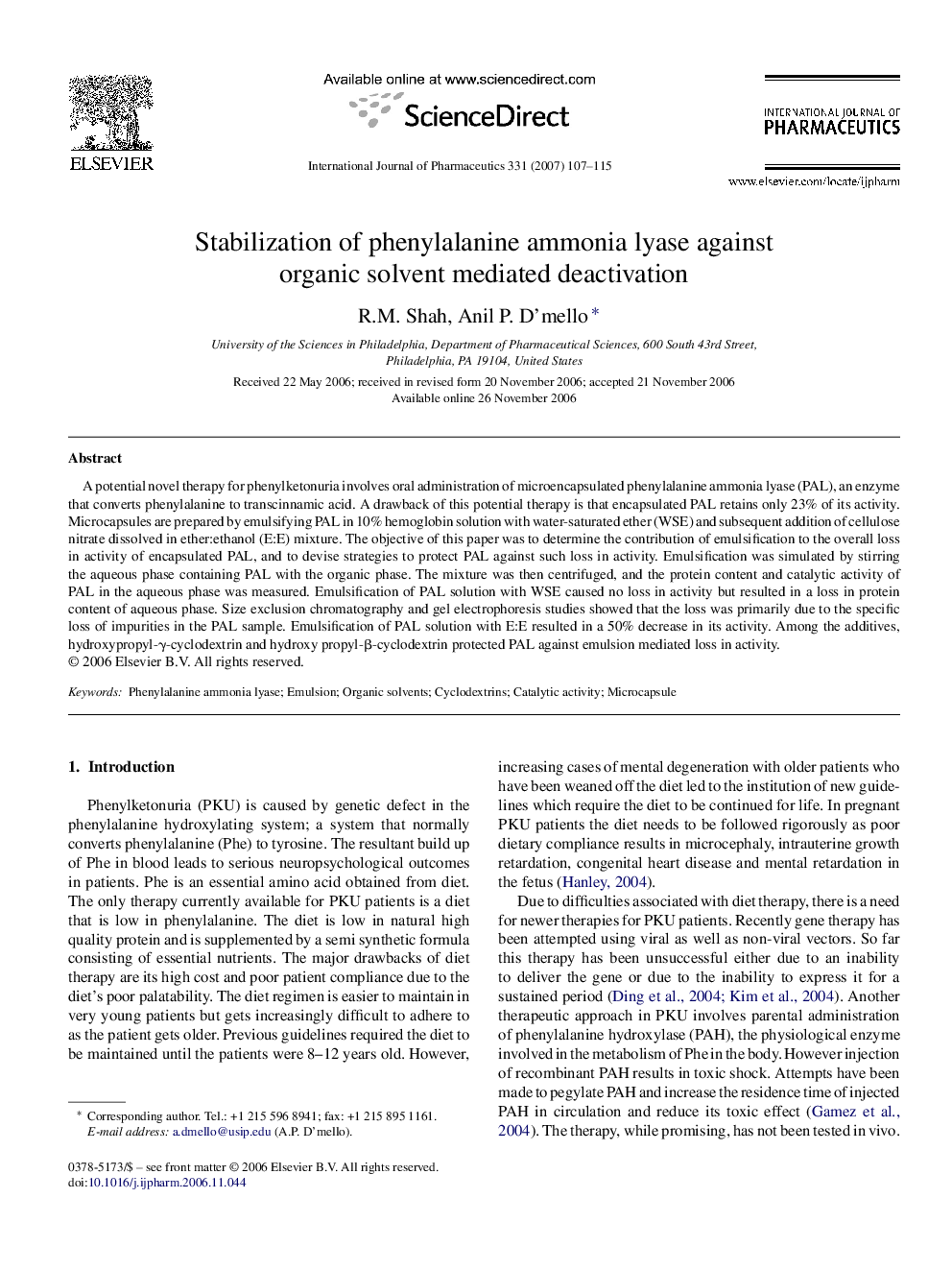| Article ID | Journal | Published Year | Pages | File Type |
|---|---|---|---|---|
| 2506457 | International Journal of Pharmaceutics | 2007 | 9 Pages |
A potential novel therapy for phenylketonuria involves oral administration of microencapsulated phenylalanine ammonia lyase (PAL), an enzyme that converts phenylalanine to transcinnamic acid. A drawback of this potential therapy is that encapsulated PAL retains only 23% of its activity. Microcapsules are prepared by emulsifying PAL in 10% hemoglobin solution with water-saturated ether (WSE) and subsequent addition of cellulose nitrate dissolved in ether:ethanol (E:E) mixture. The objective of this paper was to determine the contribution of emulsification to the overall loss in activity of encapsulated PAL, and to devise strategies to protect PAL against such loss in activity. Emulsification was simulated by stirring the aqueous phase containing PAL with the organic phase. The mixture was then centrifuged, and the protein content and catalytic activity of PAL in the aqueous phase was measured. Emulsification of PAL solution with WSE caused no loss in activity but resulted in a loss in protein content of aqueous phase. Size exclusion chromatography and gel electrophoresis studies showed that the loss was primarily due to the specific loss of impurities in the PAL sample. Emulsification of PAL solution with E:E resulted in a 50% decrease in its activity. Among the additives, hydroxypropyl-γ-cyclodextrin and hydroxy propyl-β-cyclodextrin protected PAL against emulsion mediated loss in activity.
